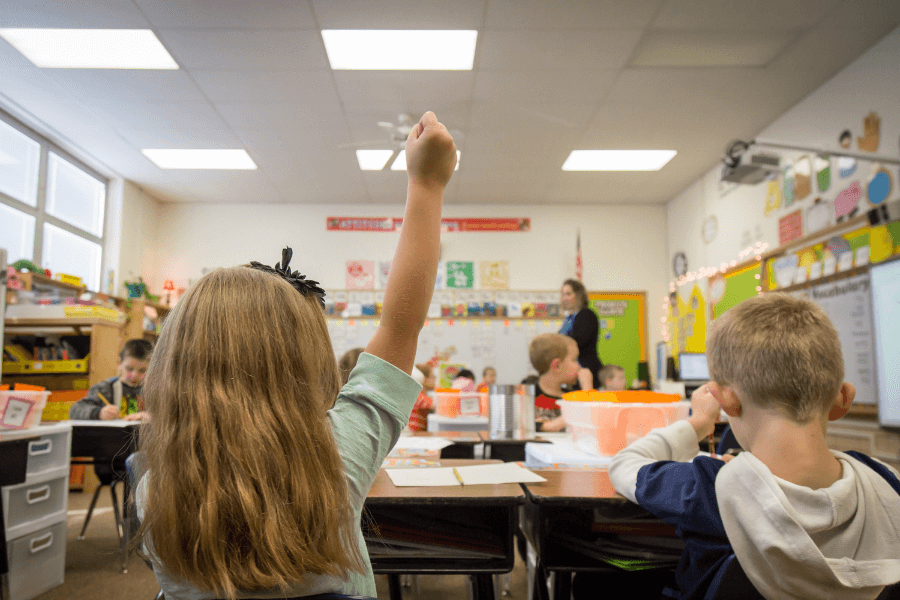
School lockdown drills are essentially a practice exercise to ensure everyone knows what to do in the event of an emergency. Typically used for the potential of a shooter, lockdowns attempt to shut everything down and hinder an outsider’s ability to harm those in classrooms. They occur regularly at a number of K – 12 schools as well as some universities and offices across the country. The idea is to cut back on the degree of panic that people feel in the moment so they can react to the situation and potentially even save lives.
Reasons for a Lockdown Drill Guide
Lockdown drill guides are meant to give people a frame of reference when they’re in the thick of an emergency. Teachers have an obligation to protect the kids in the class, but students also need to be willing to do their part too. The lockdown drill guide gives everyone clear instructions based on where the threat is and how likely they are to be exposed to it.
Lockdowns can be difficult for many people, given the nature of the drill. However, they’re often the best defense that people have when they’re trying to make decisions in the midst of chaos. If people — both students and teachers — can rely on a reasonable plan that was formulated with best practices in mind, they stand a better chance of doing the right thing for themselves and those around them.
Steps to a Practice Lockdown Drill
It’s important to know that a practice lockdown drill is not the same exercise as an evacuation drill. With a lockdown, you’re trying to keep people contained in a safe place in the building, whereas an evacuation drill will try to get people out of the building in an orderly fashion. Lockdowns share similarities with the ‘duck and cover’ drills that kids in the 1950s might have endured under the threat of a nuclear bomb.
The steps are fairly straightforward and designed to deter shooters in every possible way:
- All doors to classrooms should be locked. This provides an initial barrier to the shooter, hopefully encouraging them to move on.
- All students moved away from hazardous areas. Students need to get to the safest part of the classroom, typically to the interior walls where there is no glass. If they’re in the hallway or bathroom, they’ll need to ideally clear out as quickly as possible.
- All students are to move out of the shooter’s line of vision. This step usually involves dropping to the floor, though could mean moving to a concealed part of the room.
- All window shades should be pulled. Darkening the classroom will make it more difficult for a shooter to pick a classroom that’s packed with people. This step includes covering any glass portions of the doors to the classroom.
- Classroom lights are turned off. This step ensures that shooters will have to enter the classroom at their own peril, without the benefit of being able to see who is where.
- If students are outside, say during drop-off times or recess, an alternative location should be identified. The chosen spot should be based on the layout of the school and the location of the threat.
These steps can’t prevent all tragedies, but they’re designed to limit the damage wherever possible. Those who design the lockdown drills understand that the shooter may very well be a student who knows the classroom schedules by heart, but all the steps involved can create enough of a barrier to classmates so there’s less incentive to take the chance.
The more that faculty and students alike can get used to the procedure, the more likely they’ll be able to do it under pressure. It’s important to go as quickly as possible without risking people’s safety, and this can only be done when everyone has enough training under their belt. It can be nerve-wracking to think of staying contained in a place with an active shooter, but the reality is that children are safer inside than they are heading out into the open where they are more visible and thus easier targets.
Lockdown Drill Procedures
Lockdown drill procedures should ideally be practiced several times throughout the year, and they shouldn’t be announced beforehand. So if they occur during lunch, classes, or before school, students and teachers will feel comfortable with what they’re supposed to do in a variety of scenarios. Any errors can be corrected without the dangerous consequences as during a real event. Drills should also be implemented with assistance from local law enforcement, so everyone is on the same page.
Talking to Students About Lockdown Drills
It’s worth noting that the majority of students are relatively comfortable with lockdown drills. Despite the connotations that they have for many people, the reality is that most kids view it the same way they would a fire drill. However, there are some students who may respond with more anxiety, particularly if they have any real-life exposure to violence or if they’ve followed news coverage on other shootings.
The best message that any adult can send to a child is that there are people looking out for them, and while it’s impossible to prevent every tragedy, taking steps like lockdown drills is an important way to take control over a seemingly uncontrollable scenario. It can give everyone more confidence during even the most terrifying of scenarios, particularly if they know that everyone is where they’re supposed to be and doing and what they’re supposed to do.
Hideaway Helper from School Safety Solutions is a fire-retardant blackout blind designed to be used during lockdowns to cover the windows. When paired with strong locks, they can be a major deterrent for shooters. Instead of teachers having to rely on construction paper, they can use high-quality blackout fabric that can be both easily installed and quickly deployed. Contact us today to learn more about how they can help in a practice lockdown drill.